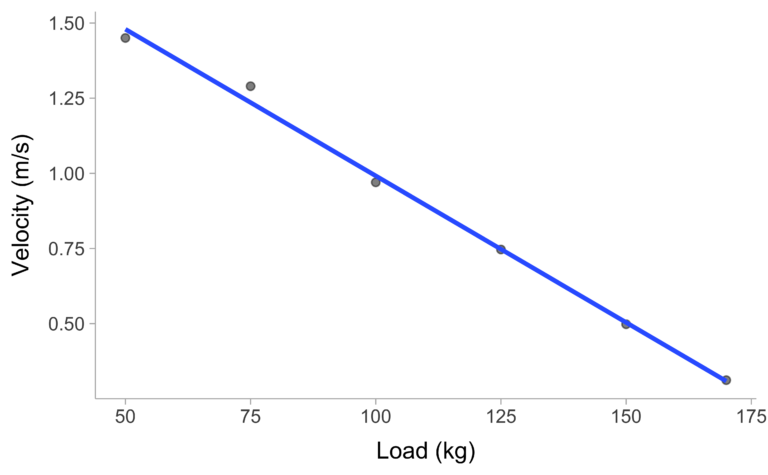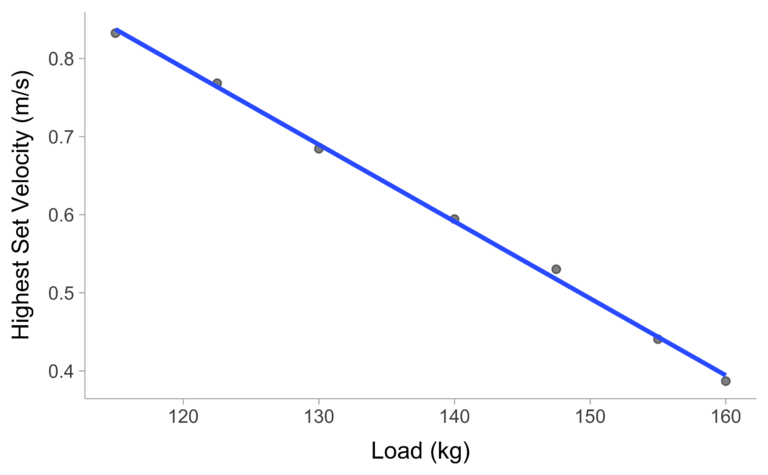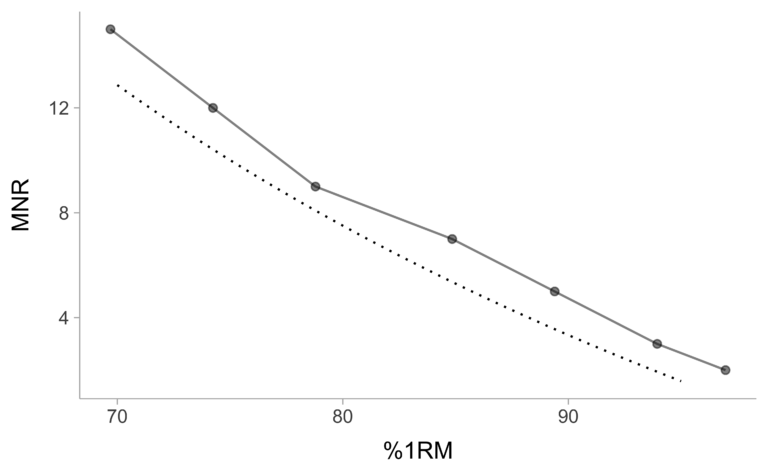{LEVsim}: Theoretical Load-Exertion-Velocity Model – Part 1: Resistance Training Phenomena
Resistance training prescription can be conceptualized from the dose perspective. Dose is a complex construct, but for the purpose of this article series, I will define it using the four interdependent components: (1) intensity, (2) volume, (3) density, and (4) other (Jovanović 2020).
Intensity component can be further divided into the (1) load, (2) intent, and (3) exertion. Assuming iso-intertial resistance training, load component of intensity is related to the mass and weight of the lifting object. Load can be expressed in either (1) absolute terms (i.e., in kilograms or pounds), or in (2) relative terms, by comparing the absolute value to some reference, like lifter’s body weight, or maximal weight one is able to lift (i.e, 1RM).
Intent component of intensity relates to the lifters will to perform a repetition with maximum possible acceleration and velocity, usually in the concentric range. Intent can be maximal, or sub-maximal where specific lifting tempo is prescribed (e.g., lifting for 2 seconds, pausing for 2 seconds at the top, lowering for 3 seconds, and pausing 5 seconds at the bottom of the lift).
Load-Velocity Trade-off
One of the most important phenomena of resistance training, given the maximal intent to lift as fast as possible in the concentric range, is trade-off between load and movement velocity (Figure 1; i.e., Load-Velocity trade-off). The exact relationship of this trade-off depends on the exercise, athlete, as well as the velocity metric, but it is often represented with a simple linear or 2nd-degree polynomial equation. There are multiple approaches to measure and express repetition velocity and in this article series I am referring solely to the mean concentric velocity.

Figure 1: Load-Velocity Trade-off. The more weight on the bar, the slower one can lift. Note: Blue line represent the linear model
This relationship can be summarized with a simple profile using linear regression that provides two parameters: (1) slope and (2) intercept, that can be transformed into more intuitive $V_0$ and $L_0$ estimated parameters. But more about this later.
Exertion component of intensity relates to the proximity to momentary failure (MF). For example, if a lifter, with a certain load, performs 8 repetitions, attempts 9th repetition and fails to lift it under specified technical constraints (e.g., depth), then this lifter expressed maximal exertion. This load can be expressed as 8 repetition maximum, or 8RM. The highest load that can lifted only once, is termed one-repetition-maximum or 1RM. 1RM can be used to express load in relative manner. For example, if 1RM is 150 kg, and a lifter uses 100kg, then this load can be expressed as 66% 1RM.
If the load is expressed as relative (i.e., %1RM) in the Load-Velocity relationship, one can create Load-Velocity Profile (LVP). LVP allows one to gauge relative intensity (i.e., %1RM) by using repetition velocity (given the assumption of maximal intent).
In addition to 1RM, velocity at 1RM (v1RM) is also interesting parameter that can be useful in prescription. But more about it later.
Load-Max Reps Trade-off
Another important phenomena of resistance training, is the higher the load (i.e., %1RM), the lower the maximal number of repetitions (MNR; or nRM) (Moraes et al. 2014; Richens and Cleather 2014; Shimano et al. 2006; Arazi and Asadi 2011). This Load – Max Reps relationship is consistently manifested at different scales, from a single myo-fiber, single muscle, single joint to multi-joint movements. The exact shape of this relationship varies between exercises and individuals, but the coaches often refer to Epley’s equation/model (Equation 1) and Table 1 as a heuristic rule of thumb (DiStasio 2014; Jovanović 2020; Wood, Maddalozzo, and Harter 2002; Wendler 2017).
\begin{split}
\%1RM = \frac{100}{0.0333 \times nRM + 1}
\end{split}
| nRM | 1 | 2 | 3 | 4 | 5 | 6 | 7 | 8 | 9 | 10 |
|---|---|---|---|---|---|---|---|---|---|---|
| %1RM | 97 | 94 | 91 | 88 | 86 | 83 | 81 | 79 | 77 | 75 |
Table 1: Epley’s table
More about Epley’s and other models to map out the Load-Max Reps relationship, as well as their use in resistance training prescription, can be found in Load-Exertion Tables And Their Use For Planning article series, as well as the Create Custom Set and Rep Schemes With {STMr} course.
The aforementioned equation and table assumes maximal exertion (i.e., going to failure). The lifter using 8RM load doesn’t necessary need to perform all 8 possible reps, and can stop the set before reaching point of failure. Let’s assume that this lifter performed 5 repetitions out of the 8 possible (the nomenclature for this is commonly: 5[8], or 5 w/8RM). In this case exertion level is sub-maximal. To quantify level of exertion in the sub-maximal sets (using the last repetition performed), and to assign exertion level to each performed repetition, one can use reps-in-reserve (RIR), or percent of maximum number of repetitions (%MNR) (Table 2). This sub-maximal 5[8] set can also be expressed as 5 w/3RIR (read as “5 reps with 3 reps-in-reserve”) or 5 w/62%MNR (read as “five reps with 62% maximal number of repetitions”). Due to easier and intuitive understanding, RIR is favored over %MNR in expressing exertion level.
Please note that both RIR and %MNR represent different approaches in quantifying exertion or proximity to momentary failure. RIR is on the additive scale, while %MNR is on multiplicative scale. For example, 2[3] and 7[8] sets have same RIR (1 RIR), but different %MNR (67 and 87 %MNR). Thus, quantification of exertion level will be different. The same can be said for 1[2] and 4[8] sets: same %MNR (50 %MNR), but different RIR (1 and 4 RIR). Researchers should thus provide rationale for their selection of exertion level metrics. I personally favor RIR scale due its more intuitive nature, e.g., compare giving the following instruction to the average lifter: (1) “Do reps with this load until you have 2 reps in reserve”, versus (2) “Do reps with this load until you reach 77% maximum number of repetitions”. Although these examples represent perceived level of exertion (discussed in the next few paragraphs), the intuitiveness of using RIR is obvious.
| Rep | RIR | %MNR |
|---|---|---|
| 1 | 7 | 12 |
| 2 | 6 | 25 |
| 3 | 5 | 38 |
| 4 | 4 | 50 |
| 5 | 3 | 62 |
| 6 | 2 | 75 |
| 7 | 1 | 88 |
| 8 | 0 | 100 |
Table 2: Reps-In-Reserve (RIR) and percent of maximum number of repetitions (%MNR) of a 8[8] set. RIR and %MNR are different ways to express exertion level of individual reps in a set to failure.
Since the 5 reps with 3RIR represent 8RM load, we can combine the Epley’s equation (Equation 1) with number of planned repetitions (PR) per set and target RIR to get the Load-Exertion table (Table 3). As can be seen from the Equation 2, nRM is simply number of planned repetition plus the target exertion level using the RIR scale.
\begin{split}
\%1RM = \frac{100}{0.0333 \times (PR + RIR) + 1}
\end{split}
Table 3 contains calculated %1RM loads to be utilized for planned number of repetitions ending with designated RIR.
| PR | 0RIR | 1RIR | 2RIR | 3RIR | 4RIR | 5RIR |
|---|---|---|---|---|---|---|
| 1 | 97 | 94 | 91 | 88 | 86 | 83 |
| 2 | 94 | 91 | 88 | 86 | 83 | 81 |
| 3 | 91 | 88 | 86 | 83 | 81 | 79 |
| 4 | 88 | 86 | 83 | 81 | 79 | 77 |
| 5 | 86 | 83 | 81 | 79 | 77 | 75 |
| 6 | 83 | 81 | 79 | 77 | 75 | 73 |
| 7 | 81 | 79 | 77 | 75 | 73 | 71 |
| 8 | 79 | 77 | 75 | 73 | 71 | 70 |
| 9 | 77 | 75 | 73 | 71 | 70 | 68 |
| 10 | 75 | 73 | 71 | 70 | 68 | 67 |
Table 3: Load-Exertion Table using RIR as exertion level.
Similar table can be created by utilizing %MNR instead of RIR. Now the Equation 2 becomes Equation 3.
\begin{split}
\%1RM = \frac{100}{0.0333 \times \frac{100 \times PR}{\%MNR} + 1}
\end{split}
nRM in Equation 3 is now simply the number of planned repetition divided by the target exertion level using the %MNR scale.
Table 4 contains calculated %1RM to be utilized for planned number of repetitions ending with designated %MNR.
Although both Table 3 and Table 4 can be utilized for prescription (i.e., planning) purposes, the RIR approach (Table 3) is more intuitive.
| PR | 100%MNR | 90%MNR | 80%MNR | 70%MNR | 60%MNR | 50%MNR |
|---|---|---|---|---|---|---|
| 1 | 97 | 96 | 96 | 95 | 95 | 94 |
| 2 | 94 | 93 | 92 | 91 | 90 | 88 |
| 3 | 91 | 90 | 89 | 88 | 86 | 83 |
| 4 | 88 | 87 | 86 | 84 | 82 | 79 |
| 5 | 86 | 84 | 83 | 81 | 78 | 75 |
| 6 | 83 | 82 | 80 | 78 | 75 | 71 |
| 7 | 81 | 79 | 77 | 75 | 72 | 68 |
| 8 | 79 | 77 | 75 | 72 | 69 | 65 |
| 9 | 77 | 75 | 73 | 70 | 67 | 63 |
| 10 | 75 | 73 | 71 | 68 | 64 | 60 |
Table 4: Load-Exertion Table using %MNR as exertion level.
Table 3 can be very useful starting point and heuristic for prescribing single sets at particular exertion level (assuming of course, the validity and precision of the Epley’s equation). For example, if I plan to do a set of 3 repetitions, reaching 2RIR, given the Epley’s equation, I should use 86% 1RM load. Unfortunately, if I perform multiple sets of 3 reps with 86% 1RM load, my exertion levels might climb up due to fatigue. Table 3 is of course overly simplistic, but still satisficing rule of thumb that can be helpful in prescribing resistance training loads.
In a sense, Table 3 and Equation 2 provide predicted RIR (or prescription RIR) that will be reached when a particular %1RM load is lifted for planned number or repetitions, given of course the Epley’s equation as a model of this relationship. True or actual RIR can only be known retroactively in sets taken to momentary failure.
One way to gauge exertion level is to use lifters’ perceived exertion, or the subjective exertion rating of the set (or each individual rep). This is subjective exertion rating is often reported in the form of perceived RIR (pRIR), estimated RIR (eRIR), or rate of perceived exertion (RPE) scales (Balsalobre-Fernández et al. 2018; Carzoli et al. 2017; Helms et al. 2016; Hughes, Peiffer, and Scott 2020; Mansfield et al. 2020; Ormsbee et al. 2019; Perlmutter et al. 2017; Rodríguez-Rosell et al. 2020; Zourdos et al. 2016, 2019; Steele et al. 2017, 2016; Hackett et al. 2012, 2017; Hackett, Cobley, and Halaki 2018). Although not perfect estimate of the actual RIR (being further from MF and performing more reps in a set are associated with more inaccurate predictions), eRIR can represent sound strategy to autoregulate training prescription (Greig et al. 2020; Helms et al. 2018; Larsen, Kristiansen, and van den Tillaar 2021; Zhang et al. 2021). By autoregulation, I refer to adjusting the ongoing training prescription so that prescribed targets are achieved (or at least not missed much). In the previous example, I assumed predictive validity of the Epley’s equation to prescribe 3 repetitions per set with 2RIR, yielding an estimate of 86% 1RM load to be used. This can be a rough rule of thumb. But if I have missed this estimate, athlete can use his or her perceived RIR to correct (i.e., autoregulate) this load. Depending on what is prescribed and constrained (i.e., in this example number of reps per set and RIR are prescribed, while the load can vary to achieve that), athlete can use perceived RIR to adjust varying prescription components (in this example load).
Combining Load-Velocity and Load-Max Reps Trade-offs
Load-Velocity profile maps out the relationship between load (either in absolute terms, or relative using %1RM) and repetition velocity, usually using simple linear regression. Load-Max reps profile (either generic like Epley’s equation, or individually estimated one) maps out the relationship between load (usually relative using %1RM) and maximal number of repetition (MNR or nRM). These two can be combined by expressing load in Load-Velocity relationship by using MNR instead of %1RM. But to do this, one needs to perform reps-to-failure (RTF) at each 1RM %age rather than simple repetition.
Figure 1 utilizes single repetition at different loads. When one performs reps-to-failure, one can use initial velocity (i.e., velocity of the first repetition), or the fastest set repetition, which doesn’t necessary needs to be the first rep, although it usually is. This is depicted in Figure 2 (a). Figure 2 (b) depicts relationship between load on the barbell (i.e., %1RM) and maximum number of repetitions (MNR). The question that naturally follows is how and when 1RM is established? Usually 1RM estimation can be done separately using single reps, and then using that to prescribe multiple reps to failure on the same or separate days. Other option is to use multiple RTF sets until one can do only a single rep, but in that case fatigue between sets will build up and affect the estimated 1RM.
Figure 2 (c) depicts combination of the Figure 2 (a) and Figure 2 (b), where load is expressed as nRM or MNR. This can be more handy approach, but as explained it demands performing multiple sets to failure, while measuring best (or initial) set velocity.

(a) Load-Velocity relationship using the best rep velocity in a set

(b) Load-MNR relationship. Dashed line represents the generic Epley’s profile

(c) MNR-Velocity relationship that combines the previous two profiles
Figure 2: Combining Load-Velocity and Load-MNR relationships
Exertion-Velocity Trade-off
The third important resistance training phenomena, is the trade-off between velocity and exertion level (i.e., Exertion-Velocity trade-off). In other words, the closer the MF, the slower the movement velocity (Figure 3). This trade-off can be thus used as another, more objective way to gauge exertion level during the set. Figure 3 (a) depicts velocity of each individual rep in three sets to failure with 120, 135, ad 150kg. The exertion-velocity trade-off represents the loss of movement velocity as one approaches MF, given of course maximum intent level on each rep.
Figure 3 (b) depicts exactly the same repetitions, but now uses actual RIR levels of each repetition as a metric of exertion. This exertion-velocity trade-off is now easily seen, and I refer to it as RIR-Velocity profile. Velocity can be thus used to estimate RIR (at least in theory) and thus proximity to failure, or exertion level of a given set.
Figure 3 (c) depicts the relationship between velocity and %MNR. This relationship is more complex (i.e., with load interaction).











Responses